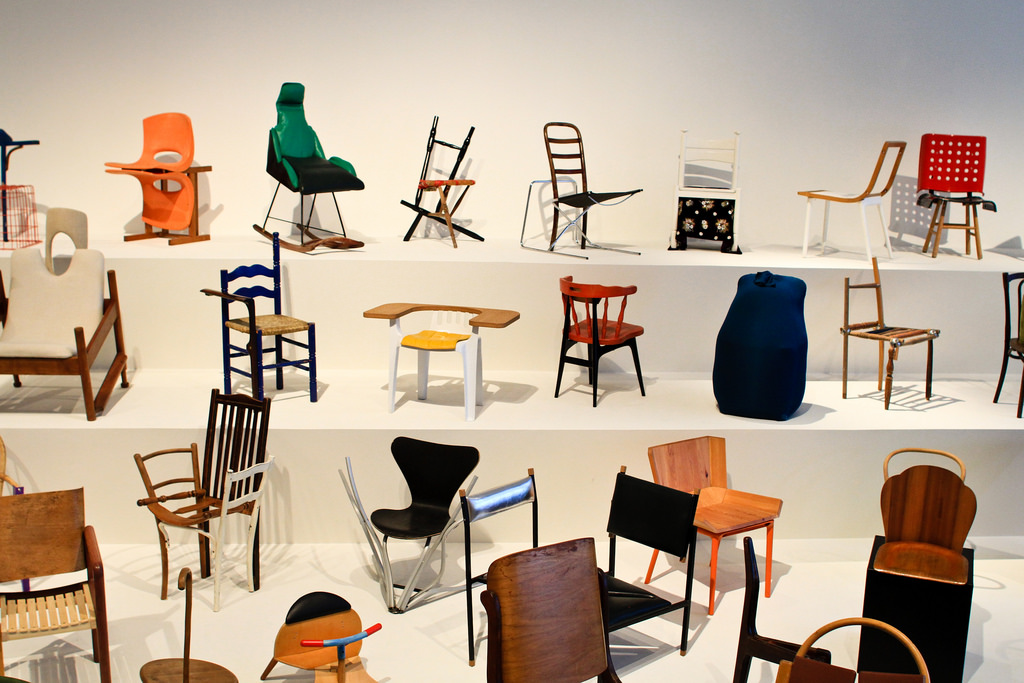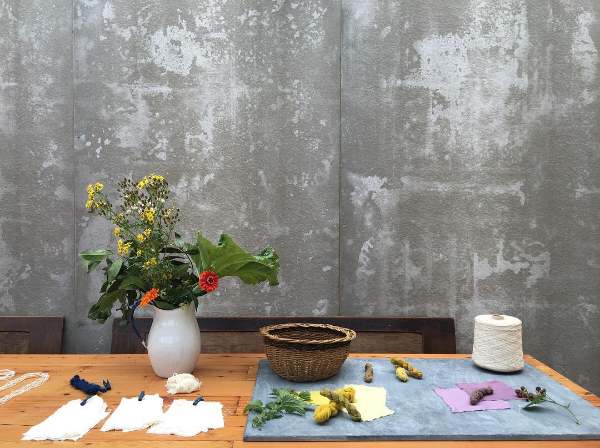For 35 years, British artist David Nash mapped the progress of Wooden Boulder, his ‘free-range sculpture’, as it journeyed down the River Dwyryd in Wales. But now the gargantuan oak sphere has vanished...
After graduating in 1967, David Nash has been living and working in Blaenau Ffestiniog, Wales, where he enjoys constant inspiration from the Welsh landscape. It is here that he creates sculptures by working with trees, wood & the natural environment. He has even created works from living trees; his artistic concepts focusing predominantly on the relationship between man and nature.
His most intriguing piece has to be Wooden Boulder. Critics describe it as land art but Nash excitedly refers to it as a 'free-range sculpture', seeing as it has been making its way to different locations by itself for the past 35 years. The artist did not initially mean for his sculpture to turn into the bold, artistic statement it has become today, making the story so far all the more fascinating. Read the full coverage in a recent article by James Fox for Christie's magazine, or our shortened version below...
Wooden Boulder had been resting peacefully in the upper end of the Dwyryd estuary since 2013. Nestled in the lee of a small island, it looked like it had settled in for the long haul. But the heavy rains that lashed so much of Britain in August 2015 produced unusually high tides that somehow dislodged the artist’s great ball of oak. Nash has been looking for it ever since.
Isolated from the prevailing trends in British art during the 1960s and 1970s, Nash found his own voice as an artist. He worked almost exclusively in wood, fashioning abstract sculptures with axes and chainsaws. Success grew: solo shows in Britain and then abroad, critical acclaim, and ever-growing sales.
At the end of 1977, Nash’s second long-term masterpiece came into being, although its genesis was as violent as it was unplanned. That winter a brutal storm brought down the limb of a 200-year-old oak tree high up in the valley. ‘It was by a public footpath so it had to be cut down,’ the artist recalls. ‘I knew the owners of the land and managed to wangle getting the job to do it.’
Nash cut down the tree in the spring of 1978 and chopped the trunk into a roughly-hewn ball that was about three feet in diameter. He planned to roll the ball down to his studio and work it up into a large-scale sculpture. But that was easier said than done: the ball weighed at least half a ton and had the potential to wreak havoc if he lost control of it.
Nash concluded that the safest thing was to transport the boulder down the hill in the neighbouring stream. But his bright idea quickly backfired. Within minutes, the boulder was stuck. It had become trapped halfway down a small waterfall, and despite repeated efforts it wouldn’t budge. A defeated Nash was left with only one option: to wait until the object moved by itself.
He had been waiting six months when a surge of rainwater finally pushed the boulder into the pool below the waterfall. This was the opportunity he’d been hoping for. He fashioned a makeshift net and hauled the boulder out of the pool. His sense of triumph, however, did not last long; a few days later some mischievous teenagers pushed the boulder back in again. Nash removed the boulder for a second time and rolled it to the top of the next waterfall along the stream.
It spent a year in that spot, which the artist recalls as being particularly beautiful: ‘There was a wild plum tree next to the boulder, so in the spring it was covered in little white petals. It was lovely.’ Nash’s perspective was clearly changing. He was no longer determined to get the wood to his studio; he’d realised that the journey itself was the artwork.
Nash filmed, photographed and drew what he now called Wooden Boulder for eight years in that second waterfall, until its tale embarked on a further twist. The owners of the land on which it had settled were selling up. Nash was worried that the new owners would either prevent him from accessing the stream or dispose of the boulder altogether.
‘I decided I had to intervene for the sake of the story,’ he says. ‘I couldn’t let it end there.’ So one day in 1988 he gathered some friends together, and they rolled the boulder across the property line to safety. It remained in that position for another year, when a further storm carried it several hundred metres downstream.
Wooden Boulder sat in a quiet part of the river near the valley bottom for four or five years, until in 1994 yet another storm took it farther down the river, where eventually it got trapped beneath a road bridge. Nash knew that the river authorities would soon remove it. ‘I was faced with another dilemma,’ he says. ‘What was I going to do with it? I’d got it to the road. Was now the time to take it back to my studio?’
Nash claims that his questions were answered by the boulder itself. ‘It told me: “If you take me back to the studio I’ll dry out and I’ll crack. The story will be over.”’ So Nash rolled it around the bridge and released it downstream again. Wooden Boulder wasn’t out of the woods yet.
Six months after placing it on the other side of the bridge, Nash was visiting the piece with his son when they saw to their amazement that it had left the water altogether and was sitting mysteriously on the bank. It had survived, they discovered, yet another close call. The river authorities were halfway through removing the artwork with their JCB when a local farmer — who had warmed to Nash’s unusual activities over the years — shouted: ‘You can’t do that, boys. Apparently it’s art!’
The farmer may not have understood Wooden Boulder, but he’d gone a long way to saving it. And when a group of admiring students later rolled the piece back into the river, it was on the move again.
Wooden Boulder first disappeared in November 2002. ‘That was a momentous event,’ admits Nash. ‘I’d got so used to it being around.’ Nash and the locals spent more than a week searching for the piece. The park wardens even put up a ‘wanted’ poster around the estuary.
Ten days after its disappearance, however, Nash received a phone call from a friend: ‘Davey, have you lost your boulder?’ Nash’s friend had found the piece on a sandbank. Over the next six months the boulder was in a constant state of movement, travelling up and down the river on an almost daily basis and settling wherever the rain, wind or tide took it. Wooden Boulder had become what Nash excitedly called a ‘free-range sculpture’.
It disappeared again in April 2003, and though it was briefly sighted in 2008, it was gone for the best part of a decade. Nash presumed that Wooden Boulder had gone out to sea, and he gave up hope of ever seeing it again.
In August 2013 he received another decisive telephone call from a friend. Nash put down the receiver, jumped into his car and hurtled off to the Dwyryd estuary. When he walked out onto the riverbank, he saw a local family staring at his long-absent masterpiece. Nash looked at Wooden Boulder — which he estimated had travelled as much as 50km up and down the river before settling — and was cheered by its belated homecoming. Was it back for good? Or was it, as Nash suspected, simply making a ‘final lap of honour’?
It is 38 years since David Nash brought Wooden Boulder into the world. Their lives have since progressed in parallel: both have grown older and craggier. Nash has observed, photographed, coaxed and protected his piece with the love and care that one might typically expect of a parent. Indeed, in his less guarded moments Nash speaks of Wooden Boulder as though it’s an errant yet ultimately lovable son. But like any good parent, Nash is just as dependent on his offspring as his offspring is on him.
‘Wooden Boulder underpins everything I do. It’s where I’ve really got it,’ Nash confesses. ‘It’s probably my most satisfactory statement as an artist.’ He may well be right. It is now recognized around the world as one of the most original and important sculptures of the past half-century. It is a profound rumination on the relationship between nature and culture, time and place. And like all great works of art, it defies easy categorisations. Is it land art? Performance art? Conceptual art? Or is it just public sculpture?
It is perhaps all and none of these. Where is Wooden Boulder now? It could be reclining peacefully in a secluded stretch of the Dwyryd. It could be strangled by branches or buried beneath silt. Or it might even have escaped into the Irish Sea and be halfway to Dublin. One thing, however, is certain: David Nash will keep looking for it. ‘It is where it is,’ he says, with a twinkle in his eye. ‘It hasn’t vanished; I just can’t see it.’


























